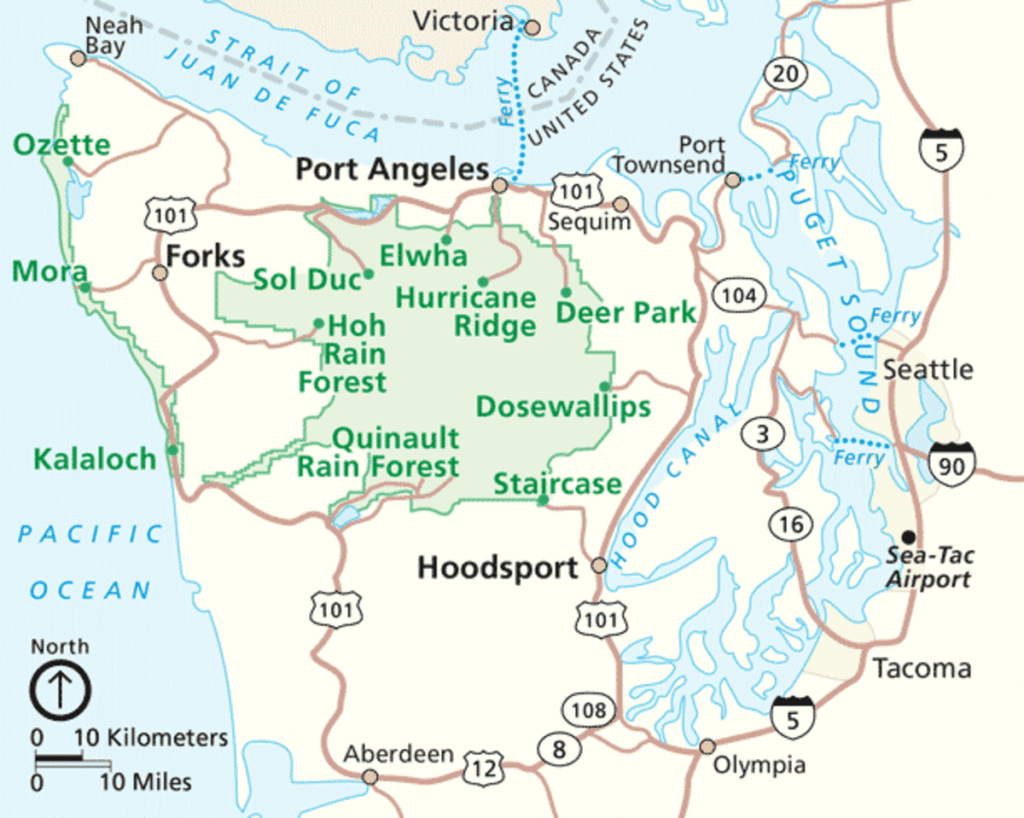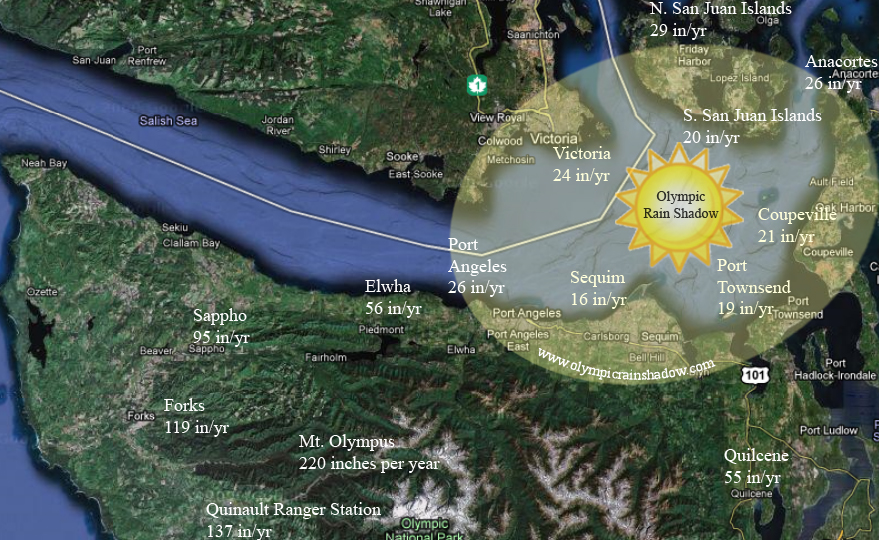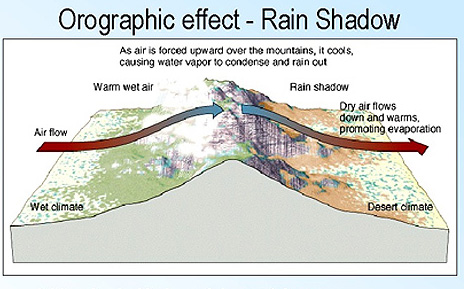One thing about living in a place called Sequim (Squim) is that there is no other town by that name to confuse things during Google searches. Even Wheatland, WY, a town of several thousand where I once lived, gets confused with many other “Wheatlands” in the U.S. This squimy uniqueness has saved time while I research my new area.
Most recently using Google, I was comparing annual rainfall amounts around the Olympic Peninsula again. One of the main reasons I picked Sequim for this winter is because of the low rainfall and warmer weather compared to other parts of the Pacific Northwest (PNW).
- Average Annual Rainfall in Sequim is 16 inches
- Average Annual Rainfall in Forks, WA (yes, that Forks, made famous in the Twilight vampire movies) is 119 inches. Forks is about 70 miles from Sequim
- Average annual rainfall in the Hoh Rainforest is up to 170 inches. That is about 105 miles by road, about half that as the crow flies.
- Mount Olympus receives 220 inches of rain (lots of it as snow)
What lies between Sequim and those rainy areas is a huge mountain range, which sucks out the moisture, creating the Olympic Rain Shadow:
An explanation of the Olympic Rain Shadow.
The Olympic mountains create a dramatic rain shadow effect when storms and moisture arrive off the Pacific Ocean from the south and west, the prevailing storm track in the Pacific Northwest. When the moisture-laden air hits the Olympic Massif it is forced to rise. When the moist air rises, it expands and cools. The colder the air, the less able it is to hold moisture, so clouds and precipitation form. This effect is known as the orographic effect.
The orographic effect in the Olympics results is copious quantities of clouds, rain or snow in the foothills and SW slopes, in places like Aberdeen, Forks, and Quinault. As the storms and moisture proceed over the crest of the Olympics, the air has lost much of its moisture. Furthermore, it descends, and warms, giving it more ability to hold moisture, preventing the formation of clouds, rain, fog, and resulting in a dryer, sunnier climate in places like Sequim, Port Townsend, and San Juan Island. The formation of a sunny, dryer area like this is known as the rain shadow effect.
So, I am much drier in Sequim, even though the winter is the rainy season. However, in Nov, Dec, and Jan, rain falls only an average of 12 days per month, less than half the time. Whether rain falls at all seems to depend on how fast a storm crosses the peninsula. I read online:
- Fast moving storms tend to form a better rain shadow than slower, stalling storms. We feel this is because, without the progression over the Olympics, the dynamics that form the rain shadow effect are not present. The rain shadow forms particularly well on the back side of fast-moving storms with defined cold fronts. So whenever you hear phrases like “fast-moving cold front” in the forecast, it will likely be sunny in Sequim!
- Very large, strong, and/or slower moving Pacific storms can sometimes fill in the rain shadow completely. This seems to be particularly true with warmer storms during the winter months.
Today will be clear and perfect for getting in a beach hike before the first NFL game.






Historic Note: Just a few years ago a Girl Scout Gypsy Trip camped at Lake Quinault, slept under the very tall trees and hiked to a mt. top. The stop was memorable for the majesty of the trees and surroundings.
Interesting!